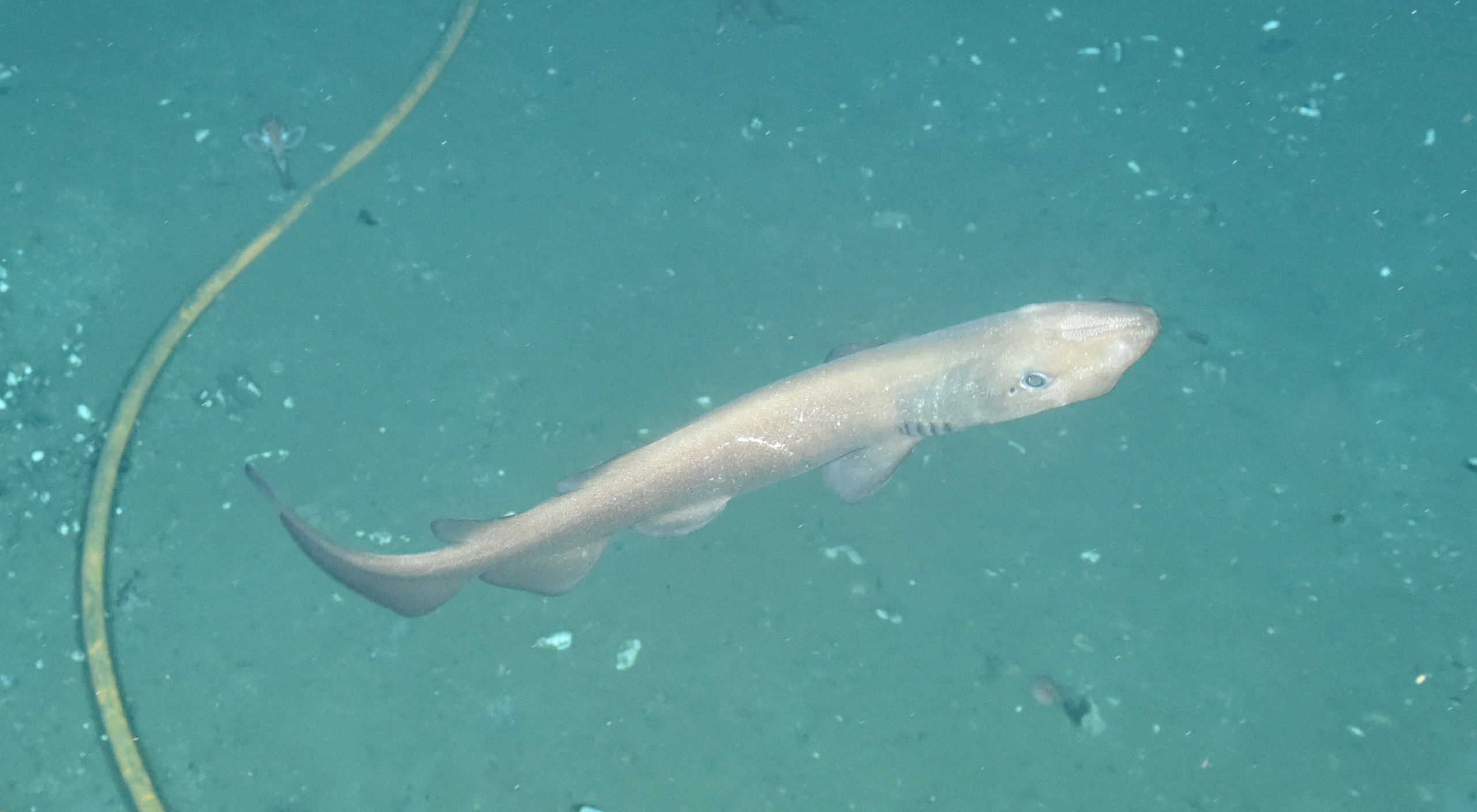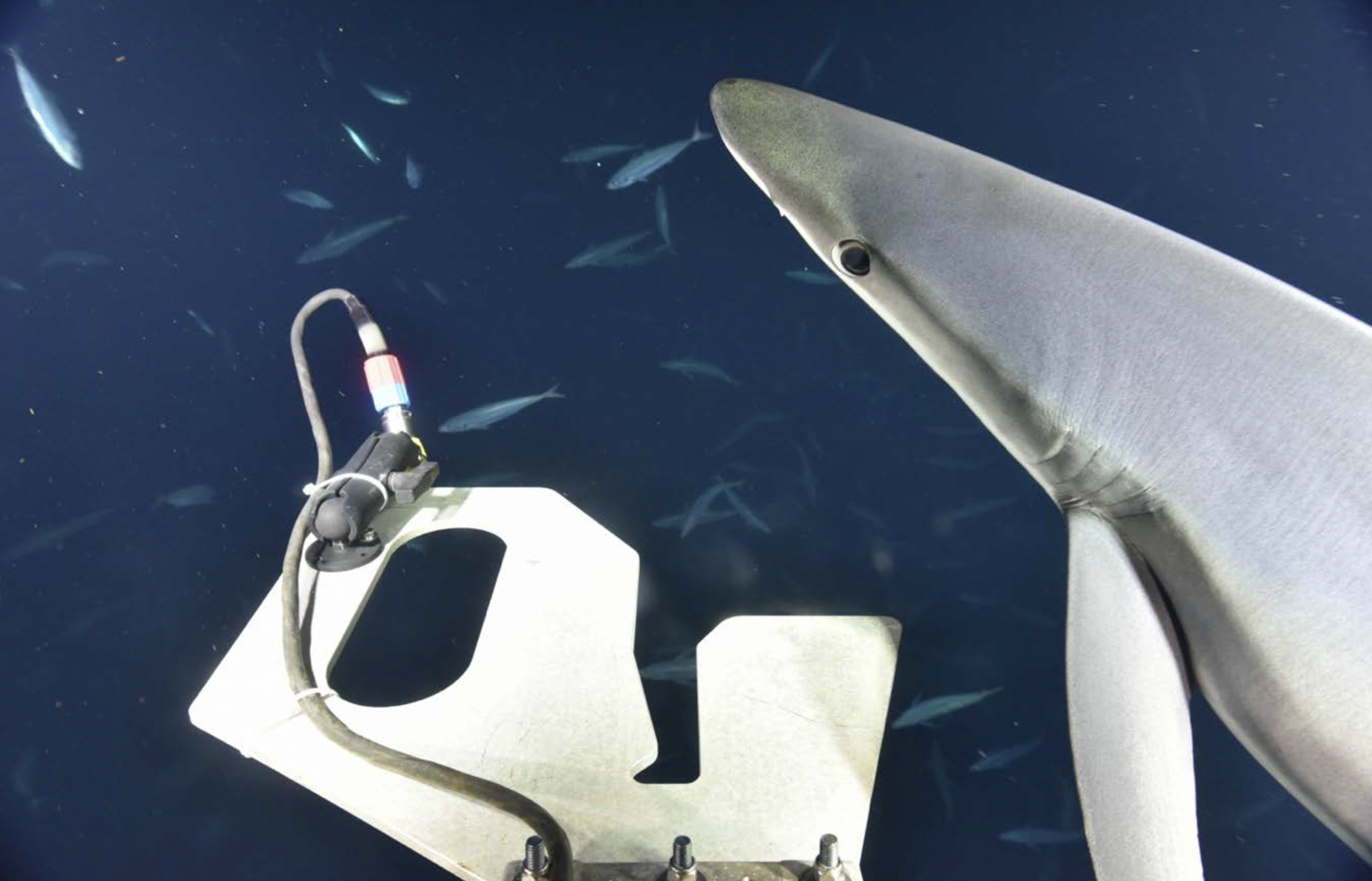Several species of cartilaginous and jawless fish have been documented at coastal sites. These fish were documented at Southern Hydrate Ridge, Slope Base, and the 600m Oregon Offshore site. Scroll down to learn more about these species.
Return to the Coastal Biology home page.
Pacific Hagfish (Eptatretus stoutii)

Photo Credit: NSF-OOI/UW/CSSF, Dive R1750, V14
The Pacific Hagfish is an eel-shaped, jawless fish. This ancient species evolved ~550 million years ago, during the Cambrian Period, and predates sharks and bony fish. They have a leathery skin that produces huge amounts of slime to repel predators, and feeds on polychaete worms and carrion using two pairs of teeth on horizontal cartilaginous plates. Hagfish are seen frequently at Southern Hydrate Ridge, resting on the seafloor or investigating anything that stirs up the sediment.
Reference:
https://en.wikipedia.org/wiki/Hagfish
Brown Catshark (Apristurus brunneus)

Credit: UW/NSF-OOI/CSSF, Dive R2224, V22
The brown catshark is a common sight at Southern Hydrate Ridge, and the species ranges from British Columbia down to the Baja California peninsula. These sharks live in the deep water on the outer continental shelf and the upper slope, and can usually be found near the seafloor in muddy or sandy areas. Brown catsharks have a long, slim body and a flat, rounded nose, and feed on many of the bottom-dwelling invertebrate species seen at SHR.
Blue Shark (Prionace glauca)

Blue sharks are a pelagic species that can be found worldwide in both tropical and cold temperate latitudes and are one of the most common pelagic species in the world. They are extremely migratory, traveling in search of denser areas of food and mates, and can make trips across the entire ocean throughout their lifetimes – a trip made easier by the large pectoral fins on either side of their body that they can use to ride ocean currents. They are named for the unique color of their skin and can grow up to 3 meters in length. Their diet generally consists of other smaller pelagic species, like fish and squid, and they regularly dive deeper to hunt. When they mate, the litters can contain more than 100 pups. Blue sharks are rarely a danger to humans, and incidents of shark attacks from a blue shark are incredibly infrequent.
They have been seen often during ROV descents, particularly at the near-surface float of the Oregon Offshore deep profiler mooring. Presumably attracted to the lights and electrical signals of the ship and ROV, it is unknown whether or not there are many sharks in the area, or if we are encountering the same resident sharks on every visit.
Reference:
Stevens, J. (2005). The IUCN Red List of Threatened Species. Retrieved November 27, 2021, from https://www.iucnredlist.org/species/39381/10222811.
